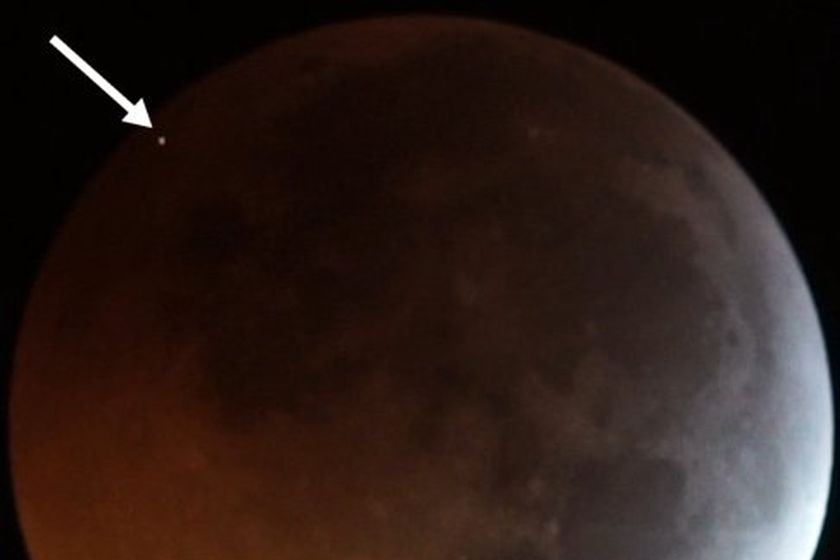On January 19, 2019, a lunar eclipse dazzled observers throughout the Americas (and a sliver of Africa and Europe). After the event, some who had watched it reported seeing a very brief flash.
Two days later as buzz began to build about the eclipse, University of Oxford astronomer Chris Lintott tweeted, "If you have footage of the lunar eclipse at 4.41 GMT check your image carefully...There might have been an impact during the eclipse!" Soon, high-quality still images of the impact began to emerge. Later, some video did as well.
Now, four Spanish scientists have published a detailed analysis of the impact in Monthly Notices of the Royal Astronomical Society that estimates the size of the object, its origin, and the impact it left on the lunar surface. They based their estimates on observations made by five f/10 Schmidt–Cassegrain telescopes in Seville, Spain. Clear weather afforded the telescope an uninterrupted view of the eclipse during the event's totality.
"This is the first impact flash unambiguously recorded on the Moon during a lunar eclipse and discussed in the scientific literature," the authors write.
The night of the lunar eclipse in early 2019 did not coincide with any major meteor showers on Earth, and based upon their analysis, the Spanish scientists said they are 99 percent sure the impact was associated with a random or "sporadic" meteoroid—the same kind of meteors that people on Earth see in the night sky when there are no active meteor showers.
The meteoroid strike created only a brief flash, lasting just 0.28 seconds, and reached a peak magnitude of 4.2, about the same brightness as Jupiter's moon Ganymede as seen from Earth. Based on various measurements and inferences, the scientists estimated that the impactor had a mass of 45kg and left a crater with a diameter of 10 to 15 meters across on the Moon. This should be observable with a spacecraft such as NASA's Lunar Reconnaissance Orbiter, which has been circling the Moon since 2009.
Astronomers, of course, have observed many impacts on the Moon over its history—indeed, these Spanish scientists are part of the Moon Impacts Detection and Analysis System, or MIDAS, created to make just these kinds of observations.
These impacts can be fairly bright because the Moon lacks an atmosphere, and so some strikes hit the lunar surface traveling as fast as 30km/s, releasing a flash of light and heat that can be seen from Earth. (The 2019 lunar eclipse impact was estimated to have a velocity of 17km/s).
Before NASA sends humans to the Moon, perhaps permanently to a surface station, it is a good idea for us to have a better handle on how common meteoroid strikes are on the surface. In fact, NASA concluded in 2016 that the rate of meteoroid impacts was higher than scientists originally believed.


